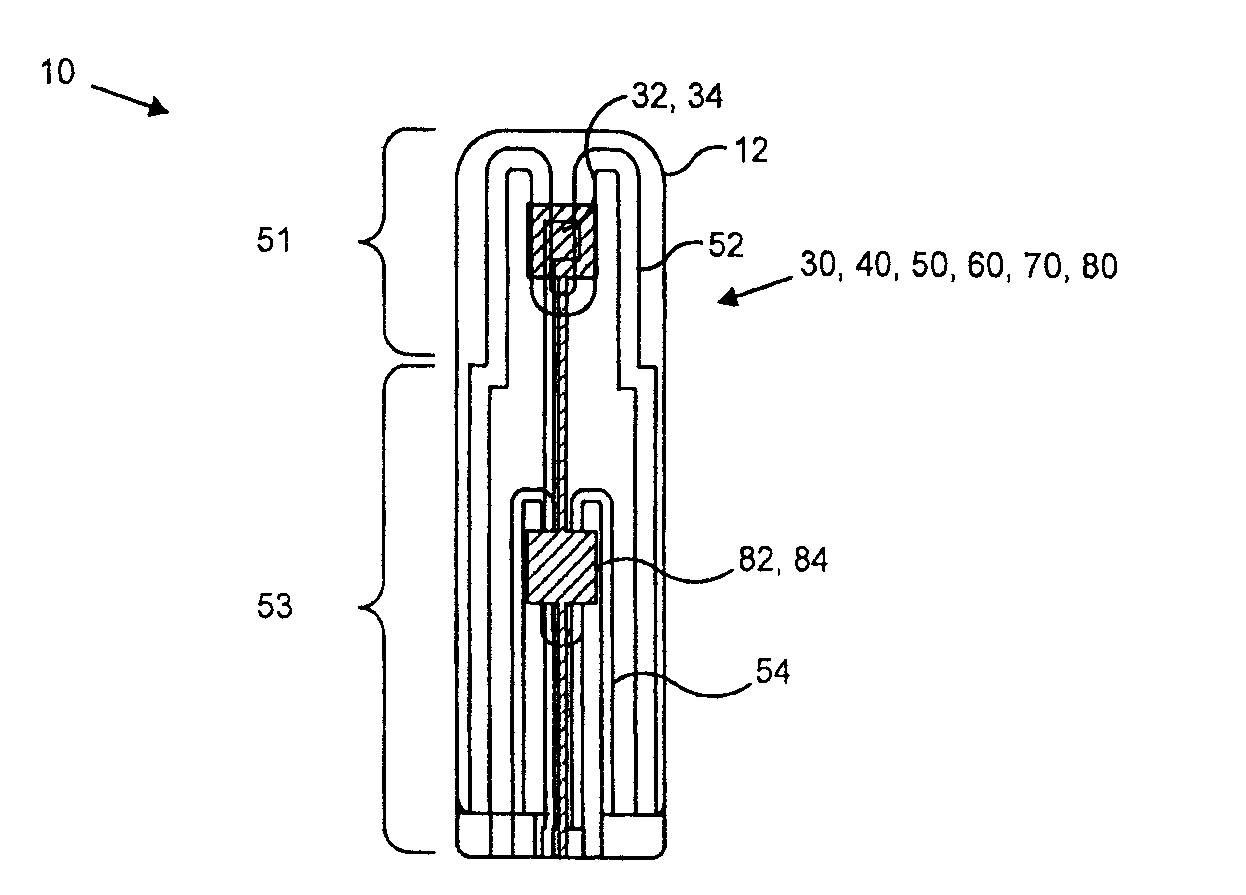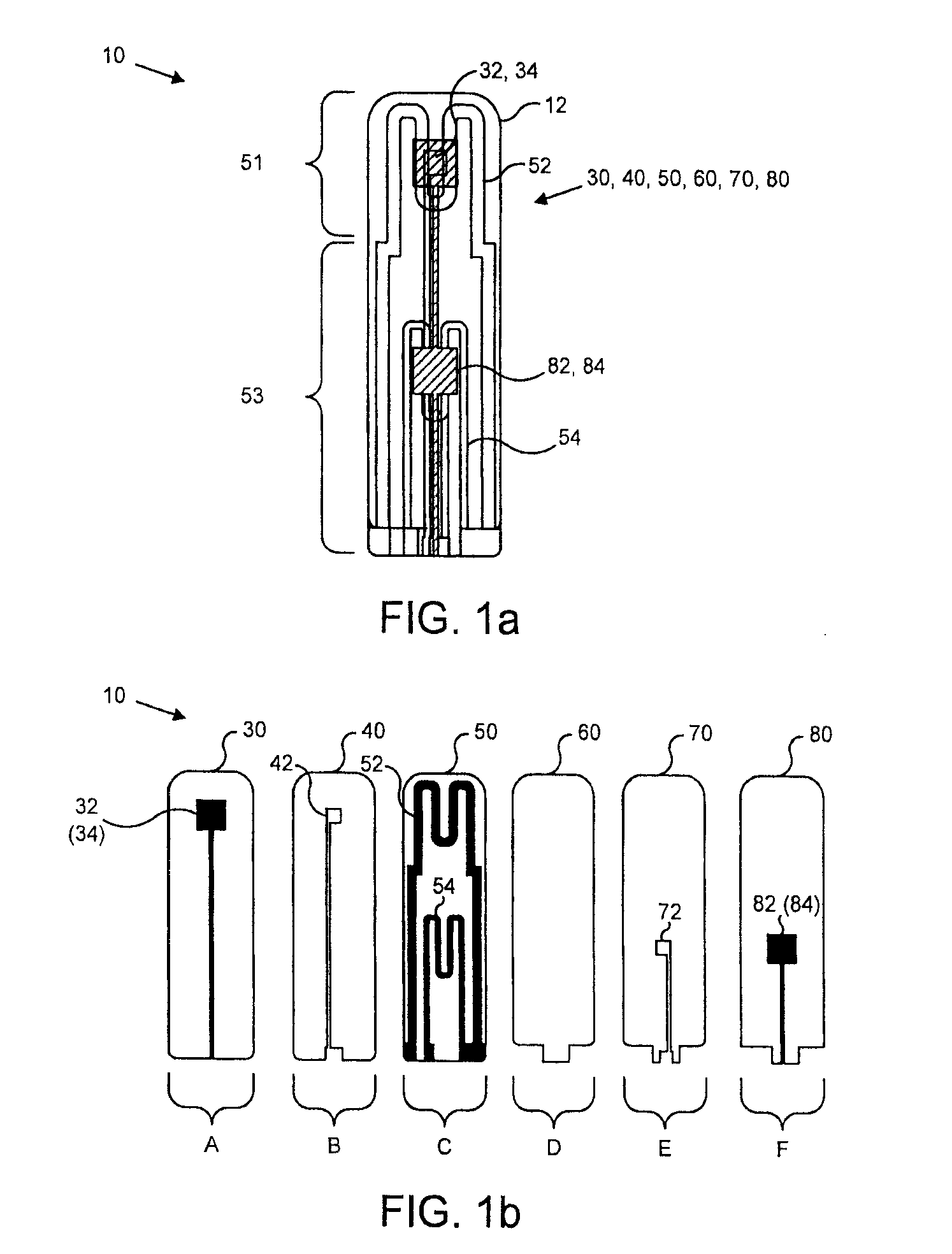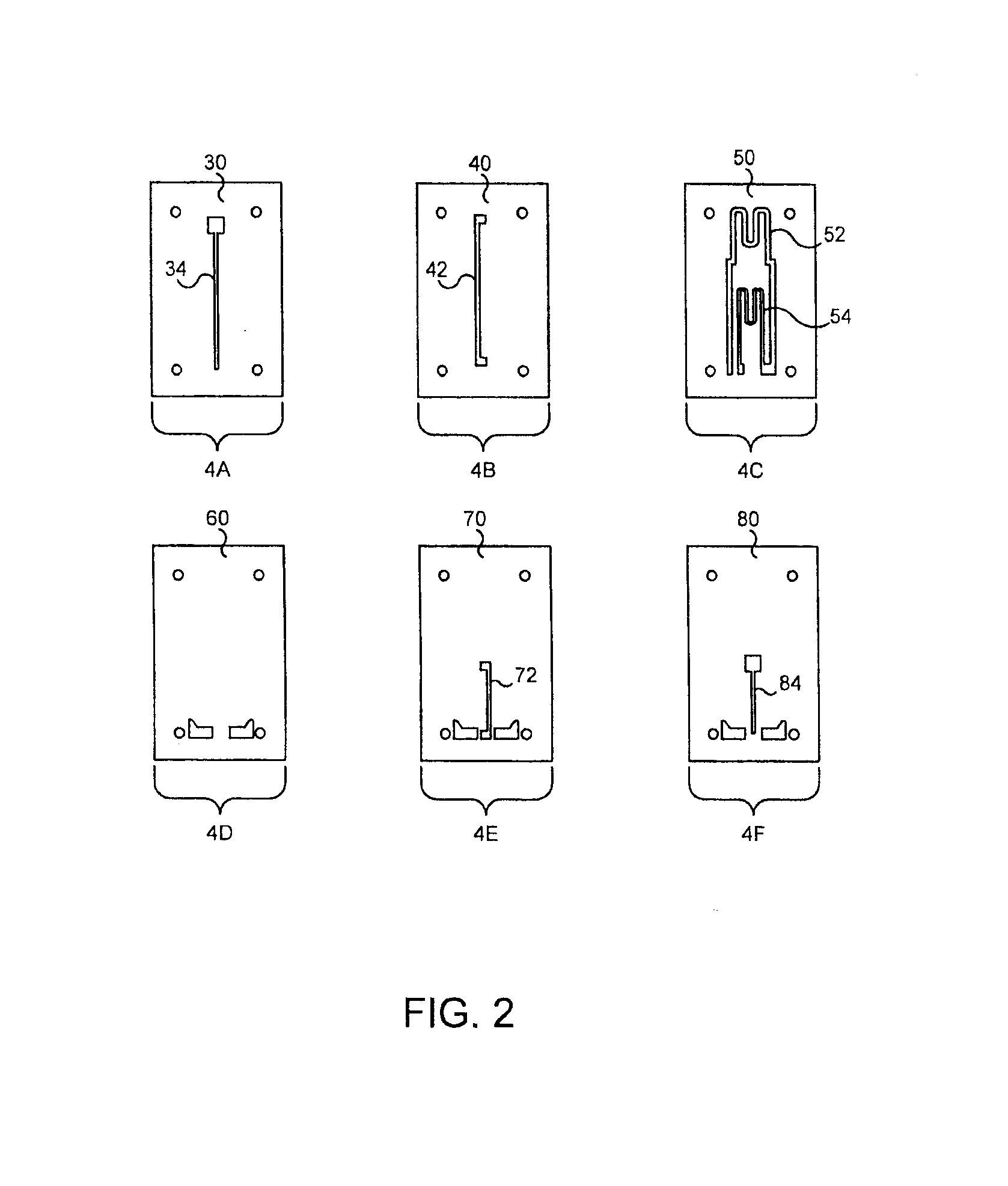MULTILAYER CERAMIC NOx GAS SENSOR DEVICE
a sensor device and multi-layer ceramic technology, applied in the direction of liquid/fluent solid measurement, material electrochemical variables, instruments, etc., can solve the problems of significant interference, inability of the oxygen pump to effectively work, and easy interference from electronic noise commonly found in the automobile, so as to achieve the effect of reducing undesired exhaust gas emissions, optimum performance, and fast sensor light off times
- Summary
- Abstract
- Description
- Claims
- Application Information
AI Technical Summary
Benefits of technology
Problems solved by technology
Method used
Image
Examples
example 1
[0031]Referring first to FIG. 1A, the basic features of the multilayer gas sensor element 10 are illustrated. More specifically, the gas sensor element 10 is shown in a schematic view such that features of the individual layers 30, 40, 50, 60, 70, 80 used to make up the sensor body 12 are shown to overlap as they would in the completed sensor element 10. This view illustrates the relationship between features of the sensor element 10.
[0032]In the sensor element 10, the oxygen sensor 32 is positioned spatially near the heater element 52, but on an outer face of the element 10. A reference electrode 34 is positioned on an inner face of the oxygen sensor layer 30 in a substantially similar position. As a result, when viewed as in FIG. 1A, the oxygen sensor 32 and reference electrode 34 overlap. Similarly, the NOx sensor 82 is positioned spatially near the heater element 54 on an outer surface of the element 10. A reference electrode 84 is positioned on an inner face of the NOx sensor l...
example 2
[0042]While there are many advantages to the planar multilayer sensor element 10 characterized in Example 1 above, it may also be advantageous to utilize similar processing techniques to produce a multilayer sensor element 110 in the form of a tubular sensor body 112, as illustrated in FIG. 5. FIG. 5 shows a conceptual schematic of a multilayer tubular sensor element 110 which, like the sensor element 10 of FIGS. 1A-4B, incorporates two different heating zones 151, 153, along with both an oxygen sensing electrode 132 and a NOx sensing electrode 182. Both sensors 132, 182 share a common air reference electrode 134. It should be noted that the first and second heating zones 151, 153 illustrated in FIG. 5 are not in practice discrete zones, but are temperature regions with no concrete border separated instead by a continuum of intermediate temperatures.
[0043]To fabricate the tubular sensor element 110 illustrated in FIG. 5, the first step was to produce a ceramic tubular multilayer str...
PUM
| Property | Measurement | Unit |
|---|---|---|
| temperature | aaaaa | aaaaa |
| temperature | aaaaa | aaaaa |
| temperature | aaaaa | aaaaa |
Abstract
Description
Claims
Application Information
 Login to View More
Login to View More - R&D
- Intellectual Property
- Life Sciences
- Materials
- Tech Scout
- Unparalleled Data Quality
- Higher Quality Content
- 60% Fewer Hallucinations
Browse by: Latest US Patents, China's latest patents, Technical Efficacy Thesaurus, Application Domain, Technology Topic, Popular Technical Reports.
© 2025 PatSnap. All rights reserved.Legal|Privacy policy|Modern Slavery Act Transparency Statement|Sitemap|About US| Contact US: help@patsnap.com



